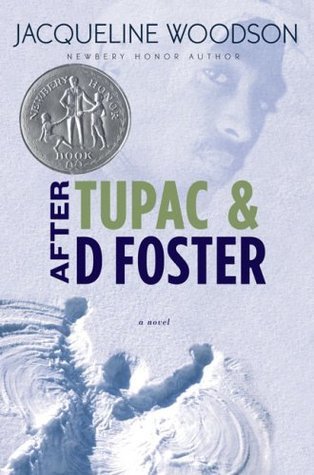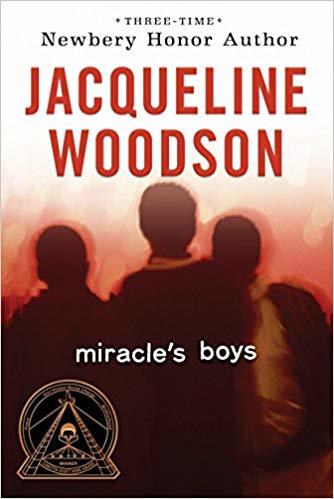Language-External Context
Jacqueline Woodson
Jacqueline Woodson is a well-known African American author of children and young adult literature. She was born on February 12, 1963 in Ohio but was raised in South Carolina and Brooklyn, New York (4). In South Carolina, she was raised by her grandparents and then she moved up with her siblings to live with her mother in Brooklyn (4). In an NPR interview, Woodson speaks of how the South and the North are an integral part of her identity (4).
She demonstrates this importance of the North and South in her life though her novel, Brown Girl Dreaming, which is her autobiography written through poetry (17). In the beginning of her novel, Woodson decides to take a different approach when describing the day she was born. Instead of giving more personal details of her birth, she chooses to describe and list important historical events that have happened and were happening near her birthday.
"In Birmingham, Alabama, Martin Luther King Jr. is planning a march on Washington, where John F. Kennedy is president. In Harlem, Malcolm X is standing on a soapbox talking about a revolution.
Outside the window of University Hospital, snow is slowly falling. So much already covers this vast Ohio ground.
In Montgomery, only seven years have passed since Rosa Parks refused to give up her seat on a city bus.
I am born brown-skinned, black-haired, and wide-eyed. I am born Negro here and Colored there.
and somewhere else, the Freedom Singers have linked arms, their protests rising into song: Deep in my heart, I do believe that we shall overcome someday.
and somewhere else, James Baldwin is writing about injustice, each novel, each essay, changing the world
I do not yet know who I'll be, what I'll say, how I'll say it...
Not even three years have passed since a brown girl named Ruby Bridges walked into an all-white school. Armed guards surrounded her while hundreds of white people spat and called her names. She was six years old." (17, p.3-4)
As we read the first couple pages of Woodson's novel, it is clear to see how aware Woodson is of how history and the world around her has affected who she is today and what she writes about.
As I have read a variety of articles and watched multiple videos, the idea of identity has been a major theme in Jacqueline's life and therefore in her books. In an article she writes,
"I write from the very depths of who I am, and in this place there are all of my identities." (7)
In her books, Jacqueline explores multiple identities such as what it means to be a male, female, a member of the LGBTQ community, an African American, a person in poverty, and many others along with a variety of combinations. She writes about these identities through the eyes of an adolescence and how they make meaning of the world around them (7). As Deborah Taylor wrote,
"Jackie's work is never just about an issue; rather, readers will always gain important insight into who we are as human beings, especially in relationship to one another." (5, p.19)
In all of her literature, the characters are figuring out who they are and what their role is in the world around them just like Woodson is in Brown Girl Dreaming and in the two novels I chose: After Tupac & D Foster and Miracle's Boys. However, Woodson uses a different dialect of English in Brown Girl Dreaming than with the other two novels. From reading her autobiography and from listening to her interviews, Woodson tends to use Standard English (SE) more than African American Vernacular English (AAVE).
Most likely, there are multiple reasons why Woodson speaks SE than AAVE. Yet, from reading Brown Girl Dreaming one strong reason may be from how she was raised. In her novel, Woodson writes a poem "The Right Way to Speak" where Woodson described a moment where her mother scolds her brother with a switch for using the word ain't (17,p.68).
"You will never, my mother says, say ain't in this house. You will never say ain't anywhere." (17, p.68)
We are never to say huh? ain't or y'all git or gonna. You are from the North, our mother says. You know the right way to speak." (17, p.69)
Woodson was taught to look at AAVE as an incorrect way of speaking. Therefore, readers will hardly find any AAVE features in her autobiography. Speaking AAVE was not how she was brought up. However, some of the characters in her novels have a different story. In the two novels I describe below, she intentionally uses AAVE as a way for her characters to communicate.
After Tupac & D Foster
In the novel After Tupac & D Foster, Woodson takes the reader into the world of three African American girls who are figuring what it means to be a pre-teen and a teenage girl in the Queens neighborhood in the early 1990's (6).The novel's time span covers about two years and three summers. The timeline coincides with the very first time Tupac was shot to the time of when he died. In an interview, Woodson says she chose Tupac because she personally "loves" him and views Tupac as "an important part of history" and "a voice for a generation."(2)
In this novel, Tupac is one of the major topics the girls talk about as they relate their lives to his songs and the events that have happened to him. Similar to many of Woodson's novels and her own autobiograghy, the girls are figuring out who they are and what their "Big Purpose" is in life. For the majority of the novel, they are discussing these heavy topics on the front porch or "stoop." All three girls mainly use African American Vernacular English instead of Standard English which is opposite to how Woodson grew up. As we dive into the "Findings and Discussion" page, we will see how using AAVE in the dialogue was an intentional choice by the author to demonstrate how the characters identify themselves as they figure out how to navigate life.
Miracle's Boys
In Woodson's novel Miracle's Boys, the author writes about three brothers from Harlem who are taking life minute by minute as they learn what it looks like to live a life without their parents. At seperate times, two out of the three boys watched their parent's breathe their last. Their father died from hypothermia after jumping in a frozen lake to save a woman and her dog. Several years later, their mom died from insulin shock due to complications with her diabetes. Consequently, this has caused alot of confusion, pain, lonliness, and anger as all three boys process the past and the future in different ways (8).
The novel consists of the narrator's thoughts and the dialogue between the three brothers. As the boys argue and talk through the pain of the past, they use a mix of AAVE and SE to communicate. Similar to Woodson's mother, the boys' mother encouraged the boys to speak "good English." Therefore, in the novel the author purposely uses more SE than AAVE. In the "Findings and Discussion," we will talk more about how certain social variables shaped how often the characters spoke AAVE.



